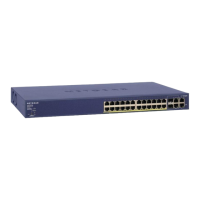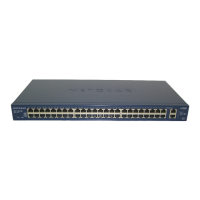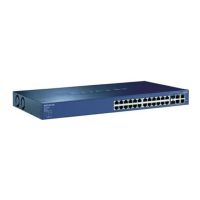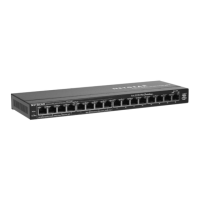VLAN for a trunk comprised of four aggregated ports, for example, the VLAN treats the trunk
as a single link, rather than as four individual connections.
Figure 1. Example of Port Trunking
As an alternative to port trunking, some organizations are turning to Gigabit Ethernet as a
solution for handling bandwidth problems.
VLAN Support
A virtual LAN (or VLAN) is a collection of PCs, servers, and other network resources that are
grouped together in the same broadcast domain. VLANs allow administrators to segment
network traffic into groups, without being restricted by physical connections a drawback of
traditional network design. Because VLANs are software-based, they allow the network
structure to quickly and easily adapt to the addition, relocation, or reorganization of nodes,
without requiring administrators to touch the hardware or visit the wiring closet.
The freedom afforded by VLANs allows companies to segment their network in ways that
make sense for the organization. These include:
By departmental groups a company might have one VLAN for the Human Resources
department, another for Marketing, and another for Engineering.
By hierarchical groups a company might have one VLAN for executives, another for
managers, another for general employees, and another for consultants and temporary staff.
For security purposes a company might use VLANs to separate departments or systems
with sensitive data from the rest of the network to reduce the chance that someone will gain
access to information that he or she is not authorized to see.
While you can have more than one VLAN on a switch, computers on different VLANs cannot
communicate directly without going through a router (that would defeat the purpose of having
a VLAN, which is to isolate a part of the network). Communication between VLANs requires a
router. This requirement can enhance network security by encouraging companies to
implement standard router-based security measures to restrict access as needed.

